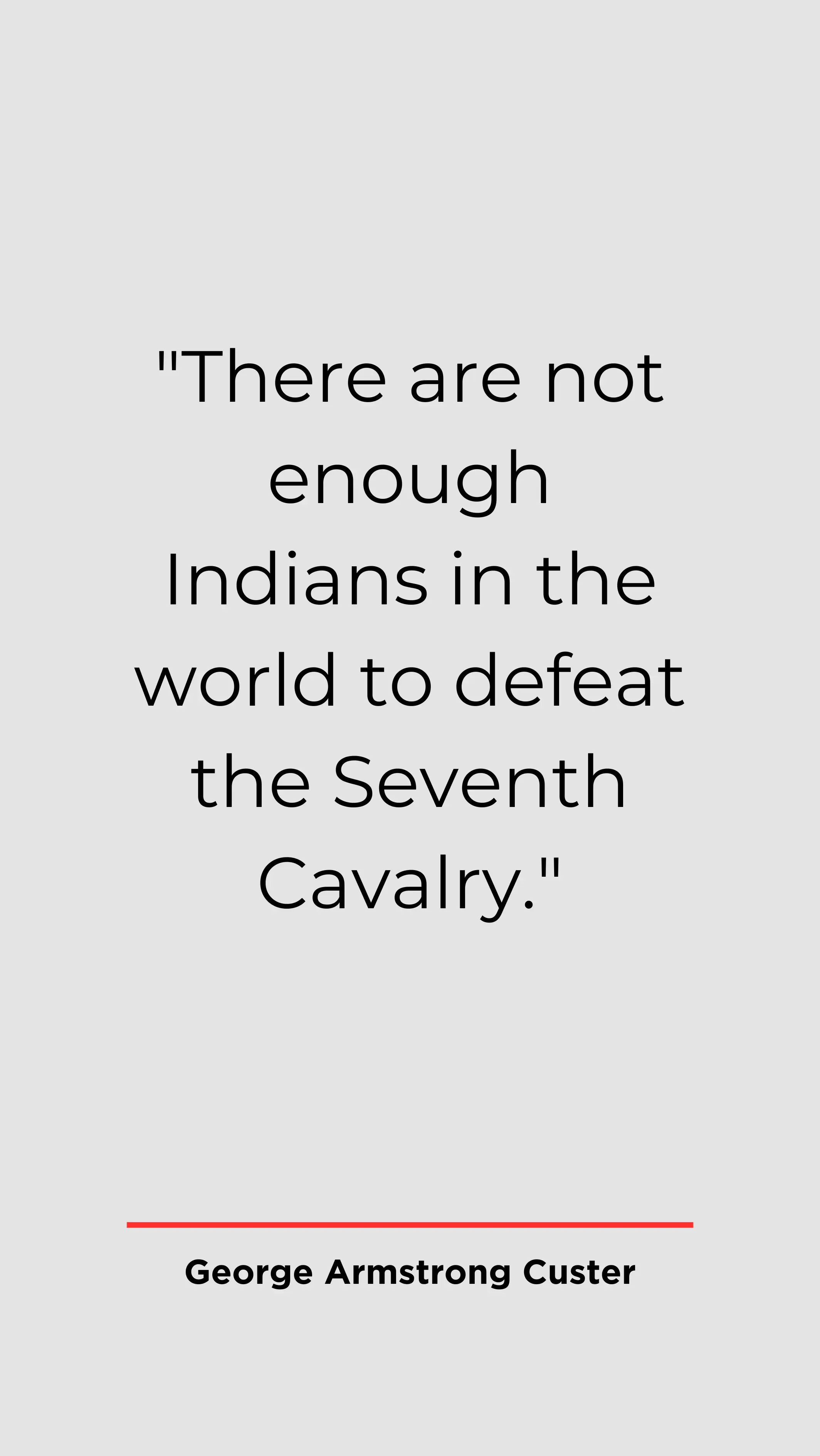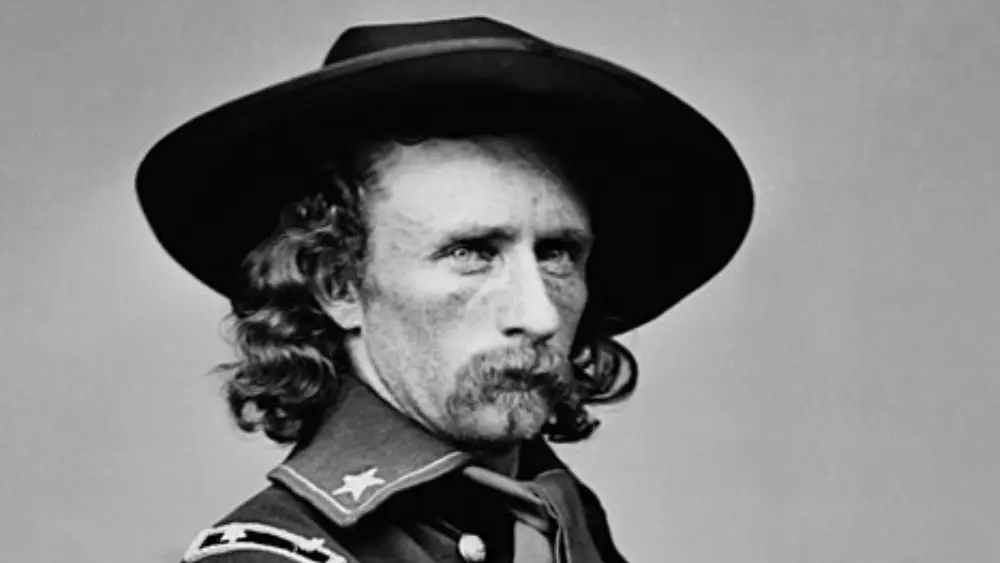George Armstrong Custer, a prominent figure in American military history, is remembered for his daring cavalry leadership during the Civil War and the Indian Wars of the American West. Born on December 5, 1839, in New Rumley, Ohio, Custer’s life was marked by ambition, controversy, and a legacy that endures to this day.
Early Life and West Point
Custer’s formative years were marked by an undeniable restlessness and an insatiable thirst for adventure. Born on December 5, 1839, in New Rumley, Ohio, George Armstrong Custer exhibited a youthful vigor and curiosity that hinted at the audacious path he would carve through history. His early years were defined by an irrepressible spirit, and this spirited nature led him to pursue a career in the military. In 1857, Custer took the first decisive step on his journey toward becoming a legendary figure in American military lore. He secured an appointment to the prestigious United States Military Academy at West Point. This momentous decision not only marked the commencement of his formal military education but also set in motion a chain of events that would ultimately thrust him into the forefront of some of the most significant conflicts in American history.
West Point, known for its tough training and disciplined setting, was where Custer transformed into a skilled officer. His time there honed his leadership skills and deepened his understanding of military strategy. Little did he know, these years at West Point laid the foundation for his rapid rise in the American Civil War and beyond. As he immersed himself in the demanding curriculum and military traditions, he gained knowledge and skills for success on the battlefield and forged enduring bonds with fellow cadets who would support him in the challenging years ahead. West Point was more than just a place to learn for Custer; it was where his indomitable spirit was tempered, preparing him to be a formidable leader in crucial times.
George Armstrong Custer: Civil War Service
During the uproar outbreak of the American Civil War, George Armstrong Custer emerged as a prominent figure in the Union Army, showcasing remarkable leadership and tactical prowess within the cavalry ranks. Swiftly ascending through the military hierarchy, Custer’s unwavering dedication to the Union cause was evident in his daring exploits on the battlefield. In historic clashes like the Battle of Gettysburg and the skirmish at Yellow Tavern, Custer’s audacious tactics and fearless demeanor not only demonstrated his mettle but also earned him a well-deserved reputation as a bold and aggressive commander. His contributions to the Union cavalry left a lasting legacy in American military history, paving the way for his future endeavors and establishing him as a celebrated Civil War hero.
George Armstrong Custer’s Civil War service represents a remarkable chapter in American military history, marked by a meteoric rise to prominence in the Union Army. As the nation grappled with the turmoil of the Civil War, Custer’s career trajectory was nothing short of extraordinary. His remarkable exploits on the battlefield, particularly in engagements like the pivotal Battle of Gettysburg and the fierce clash at Yellow Tavern, showcased not only his courage but also his ability to lead with audacity. Custer’s reputation as a bold and aggressive officer grew with each passing skirmish, solidifying his status as a celebrated commander. His invaluable contributions to the Union cavalry not only aided in the preservation of the Union but also set the stage for his future endeavors, making George Armstrong Custer an enduring figure in the pantheon of Civil War heroes.
The Battle of Gettysburg
The Battle of Gettysburg stands as one of the most crucial turning points in the American Civil War, and within this monumental clash, George Armstrong Custer’s cavalry emerged as a linchpin in securing a Union triumph. Custer’s unwavering courage and strategic brilliance were on full display as he led daring charges against Confederate forces, etching his name into the annals of military legend. His fearless and audacious maneuvers not only galvanized his troops but also struck a decisive blow against the Confederate adversaries, contributing significantly to the Union victory in this historic battle.
Amidst the thundering cannons and swirling chaos of Gettysburg, Custer’s fearless cavalry charges became the stuff of legend. His unwavering resolve and audacious leadership stood as a beacon of inspiration for Union forces. Custer’s actions played a pivotal role in turning the tide of battle, ultimately leading to a Union triumph that would shape the course of the Civil War. His contributions at Gettysburg solidified his reputation as a fearless and dynamic military leader whose legacy would endure far beyond the fields of battle.
George Armstrong Custer: Post-Civil War and Indian Wars
Following his service in the Civil War, George Armstrong Custer embarked on a new chapter in his military career that would define his legacy—the Indian Wars on the American frontier. Transitioning from the battlefields of the East to the wide-open frontiers of the American West, Custer made a lasting impact through his role in the conflicts with the Plains tribes. His name became synonymous with these hard times as he engaged in campaigns that would shape the course of Western history and contribute to the complex narrative of westward expansion in the United States.
In the wake of the Civil War, George Armstrong Custer’s journey continued in the untamed lands of the American West, where he played a prominent role in the Indian Wars. These conflicts against the Plains tribes marked a significant and controversial chapter in his military career. Custer’s actions and decisions during this period would provoke both admiration and criticism, leaving a lasting imprint on the pages of American history and deepening the complexities of the nation’s westward expansion.
The Battle of the Washita River
In 1868, an event of significant historical consequence unfolded along the banks of the Washita River, forever etching its name into the annals of American history – the Battle of the Washita River. This pivotal moment in the Native American Wars was led by the ambitious and controversial figure, General George Armstrong Custer. With unwavering determination, Custer orchestrated an audacious attack on a Cheyenne village nestled along the serene waters of the river. The battle itself proved to be a resounding military success, demonstrating Custer’s tactical prowess and decisiveness. However, this victory came at a steep cost, one that would cast a shadow over Custer’s legacy and the broader military campaign. The attack on the Washita River village drew intense criticism for its devastating impact on innocent civilians, igniting debates about the morality and ethics of such military operations.
The Battle of the Washita River serves as a poignant reminder of the complex and often morally ambiguous nature of warfare. While it showcased Custer’s military prowess and strategic acumen, it also raised unsettling questions about the collateral damage inflicted on non-combatants. This event remains a powerful symbol of the broader conflicts between Native American tribes and the U.S. government during the 19th century, a period marked by both military victories and profound moral reckoning. In times of conflict, military leaders make difficult choices that blur the line between military success and moral responsibility, leaving a lasting imprint on the pages of American history, enduring as a testament to the battle’s legacy.
George Armstrong Custer: The Battle of Little Bighorn
The Battle of Little Bighorn in 1876 stands as Custer’s most renowned and controversial moment. On that fateful day, Custer, an ambitious and audacious cavalry officer, made a decision that would seal his legacy for generations to come. With a brashness that bordered on recklessness, he chose to divide his forces, a decision that would ultimately prove catastrophic. Facing off against the combined might of the Lakota Sioux and Northern Cheyenne, Custer’s ill-fated strategy led to a devastating defeat that would forever be remembered as “Custer’s Last Stand.”
The Battle of Little Bighorn remains a potent symbol of both Custer’s daring spirit and the harsh realities of the American frontier. While some view him as a heroic figure who embodied the adventurous and fearless spirit of the American West, others see him as a symbol of reckless arrogance, a man who paid the ultimate price for his audacity. Regardless of one’s perspective, Custer’s legacy is inextricably tied to this pivotal moment in history, where his choices and actions on that dusty battlefield would become a subject of endless debate and scrutiny, shaping the way we remember this crucial era in the nation’s past.

Legacy and Controversy
The 1876 confrontation between the U.S. Army’s 7th Cavalry and the Lakota Sioux and Cheyenne tribes remains etched in the nation’s collective memory. General George Armstrong Custer’s actions during this battle, in particular, have become a source of enduring fascination and relentless scrutiny. His audacious decision to divide his forces and engage the Native American warriors head-on rather than wait for reinforcements defies easy categorization. While some view him as a reckless, self-aggrandizing figure, others regard him as a tragic hero who met his end in pursuit of a perilous duty. The legacy of the Battle of Little Bighorn continues to spark debate, encapsulating the complexities of America’s westward expansion, military leadership, and the clash of cultures that defined an era.
Despite the passage of time, the controversy surrounding Custer’s actions and the Battle of Little Bighorn persists as a compelling historical enigma. The clash on the banks of the Little Bighorn River represented a collision of two worlds, with consequences that reverberated far beyond the battlefield. Custer’s leadership decisions, whether viewed as brave or reckless, have become emblematic of the broader dilemmas faced during America’s westward expansion. This enduring debate not only sheds light on the complexities of military strategy and leadership but also underscores the ongoing importance of understanding the historical narratives that shape a nation’s identity. As historians and enthusiasts continue to dissect this pivotal moment in American history, the Battle of Little Bighorn remains a potent symbol of the intricate and often contentious interplay between legacy and controversy.










